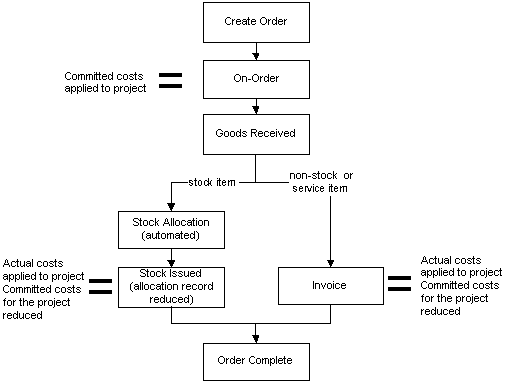Open topic with navigation
Working with purchase orders
Accounts Professional
only
Purchase Order Processing integrates with Project Costing
to link orders with projects. On completion of each stage of the purchase
order life cycle updates are automatically made.

- Stock
allocation: The ordered goods - that is, stock items, are set aside for
the project when they are recorded as received. The free stock quantity
for stock items excludes the allocated stock. This improves stock control
and reduces the potential of stock shortages. Stock allocated to a project
can be viewed.
Goods received is not performed for orders requiring non-stock or service
items.
- Committed
costs: The value of the ordered goods or service being applied to the
project when the order is placed on-order. Committed costs are generated
for all item types - stock, non-stock, service item, and refers to the
value of goods or services that have been requested but not yet charged
to the project. Generating and tracking committed costs gives an accurate
evaluation of all costs, when comparing project spend to budget.
- Actual
Costs: The value of the goods or service being applied to the project.
This is where the committed costs are converted to actual costs. This
occurs at different times for the various types of stock - stock item,
non-stock, service item.
- Stock
items: The committed costs are converted and applied as an actual cost
to the project when the allocated stock is issued.
- Non-stock
and service items: The committed costs are converted and applied to the
project when the invoice for the order is generated.
The value of both committed and actual costs of a project
can be viewed.
|
To review Ask Sage, Business Advice and Health and Safety advice, go here. All contact details for Sage are available from here.
|
Go to top
|

